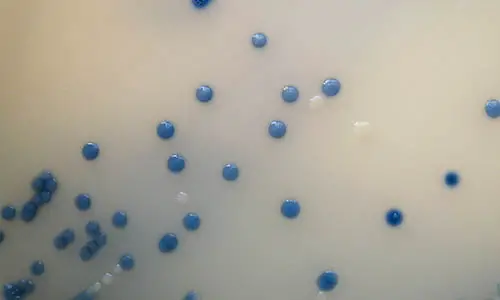1. MRSA is sometimes called superbug.
- Methicillin-resistant Staphylococcus aureus are cluster of gram positive bacteria under microscope.
- These are a tougher strain of Staphylococcus aureus.
- The counterpart of MRSA is MSSA (Methicillin-sensitive Staphylococcus aureus).
- Methicillin is a semi-synthetic (narrow spectrum) antibiotic drug that belongs to the penicillin class which is widely used to treat bacterial infection.
- MRSA develop resistance to staph infection antibiotics caused by mutation of genes of the bacteria that make it extremely virulent.
2. MRSA is an opportunistic microorganism.
- aureus is a native inhabitant of your skin and respiratory tract (commonly found in the nose) that even healthy people has it.
- MRSA carriers may not display symptoms.
- It is not always pathogenic until they have the chance at right circumstances to cause infection.
- Often due to self administration of antibiotics wherein bacteria are not completely destroyed that may soon resist antibiotic treatments.
3. MRSA targets people with weak immune system.
- The immune system works to protect the body from any microorganisms and foreign substances that threatens the body.
- Immune suppression may lead to susceptibility to variety of infections and diseases.
- HIV patients, people on chemotherapy and long term use of steroids are among those MRSA high risk groups.
4. MRSA is the major pathogen acquired in Hospitals.
- It is called nosocomial infection that may cause a considerably high incidence of illness and death or even health care costs.
- The infection is a result of invasive procedure (surgery and insertion of tubing – catheters or feeding tubes) which are prone to contamination.
- Health care providers can spread the infection from one patient to another without performing proper techniques and precautions.
- MRSA infection can also be acquired in crowded community living condition
5. MRSA can lead to potentially fatal complication.
- If left untreated, the bacterial toxins can penetrate deep into the internal organs and may be released to the blood stream causing bacteremia.
- The infection may likely end in toxic shock syndrome, a life-threatening condition.
6. MRSA prognosis varies.
- It is determine by the overall condition of the patient and the severity of the infection.
- It also depends on the patient’s response to treatment.
- The prognosis is poor mostly on patients with immunocompromised status and with existing chronic medical condition (such as Diabetes).
7. MRSA poses a great challenge in clinical medicine.
- These bacteria are quite difficult to treat as it develops resistance to standard types of antibiotics thus confining to a limited option of the treatment.
8. MRSA transmission from livestock is possible.
- MRSA epidemiology had reached its circulation to the livestock industry.
- Livestock-associated MRSA has the capacity to transmit the infection to human.
- Antibiotics are widely used in food animal production which is a contributing factor of the emergence of antibiotic-resistant bacteria.
9. Vancomycin is the wonder drug for the super bug.
- This is an intravenous form of antibiotics to treat invasive MRSA.
- It has been proven that this drug has compounds known to be sensitive to this specific strain of staph bacteria.
- It is considered as the first line of antibiotic therapy for treatment of MRSA infection.
- Oral antibiotics like clindamycin or co-trimoxazole is given to patient with mild infection.
10. MRSA can be prevented and controlled from spreading.
- Standard precautions are universal procedures carried out for infection control.
- Hand washing is the single basic practice to avoid cross contamination in healthcare facilities.
- Use of personal protective equipments (PPE’s such as gown, gloves etc.) is also employed under this control measure.











Leave a Reply